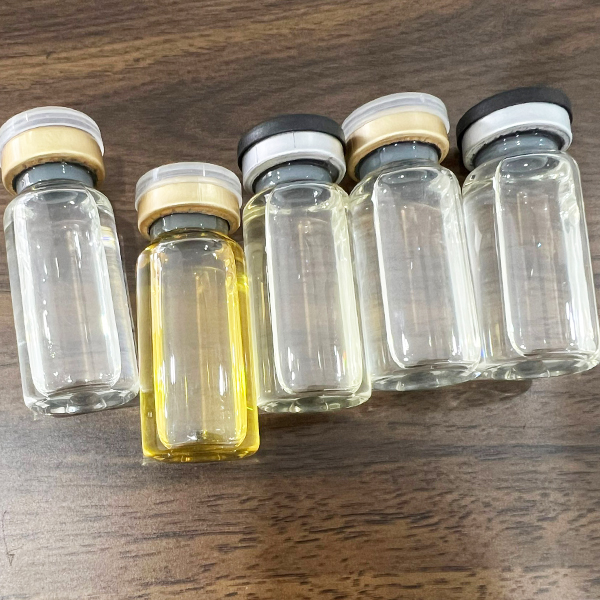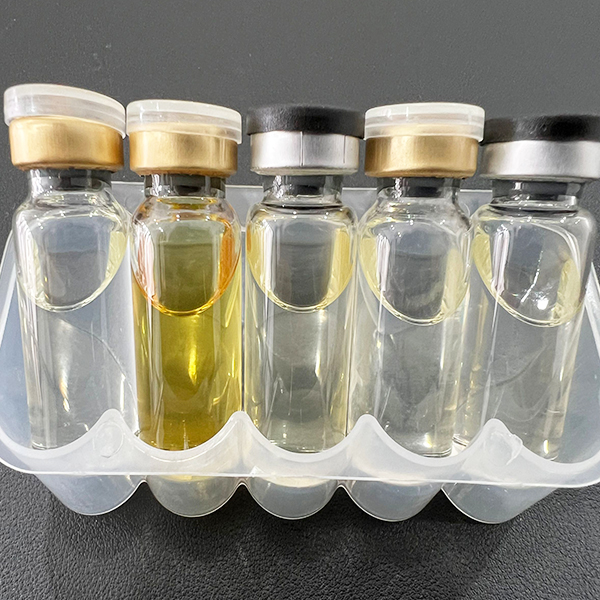NSI-189 Phosphate is a phosphorylated version of NSI-189, a compound that has gained attention for its potential neurogenic effects (stimulating the growth of new neurons). While NSI-189 and its phosphate derivative share many of the same characteristics, the phosphate version may have differences in solubility, bioavailability, and absorption rate, potentially affecting the compound's overall efficacy and how it works in the body.
NSI-189 Phosphate is a more bioavailable form of the original NSI-189, which might enhance its therapeutic effects, particularly in neurogenesis and cognitive enhancement.
How NSI-189 Phosphate Works
Similar to NSI-189, NSI-189 Phosphate acts by targeting several mechanisms in the brain:
Neurogenesis in the Hippocampus:
Like its parent compound, NSI-189 Phosphate is believed to stimulate neurogenesis in the hippocampus, an area of the brain associated with memory, learning, and emotional regulation.
Serotonergic and Dopaminergic Regulation:
The compound is thought to enhance the levels of serotonin and dopamine in the brain, which may contribute to improved mood, focus, and cognitive function.
Brain-Derived Neurotrophic Factor (BDNF) Activation:
NSI-189 Phosphate also appears to increase the expression of BDNF, a protein that supports brain health, memory formation, and the survival of neurons.
NMDA Receptor Modulation:
Similar to other nootropics in the ampakine class, NSI-189 Phosphate may modulate NMDA receptors, which are involved in synaptic plasticity, memory, and cognitive enhancement.
Increased Bioavailability:
The phosphate group may improve the solubility and absorption of the compound in the body, potentially leading to more efficient delivery to the brain.
Differences Between NSI-189 and NSI-189 Phosphate
Although NSI-189 and NSI-189 Phosphate share many similarities in their mechanisms and effects, there are a few key differences that set the two apart:
Chemical Structure:
NSI-189 is the base compound, whereas NSI-189 Phosphate is a phosphorylated version of NSI-189. The addition of a phosphate group makes NSI-189 Phosphate more water-soluble and potentially more bioavailable.
Bioavailability and Absorption:
The phosphate group in NSI-189 Phosphate enhances its solubility in water, which may lead to better absorption and potentially a quicker onset of effects. This modification could make the compound more effective when taken orally compared to the base NSI-189 compound.
Solubility:
NSI-189 Phosphate has better solubility in aqueous environments than NSI-189, which may enhance its effectiveness and absorption when ingested or administered in a solution.
Potency:
Some users report that NSI-189 Phosphate is more potent than the regular NSI-189, likely due to improved absorption, although the difference in potency can vary depending on individual biochemistry and dosage.
Formulation and Usage:
NSI-189 is typically available in capsule or powder form, while NSI-189 Phosphate may be formulated more readily into solutions due to its improved solubility. This could affect the dosing schedule and how it is administered.
Benefits of NSI-189 Phosphate
The benefits of NSI-189 Phosphate are largely the same as those of the original NSI-189, but with enhanced bioavailability:
Cognitive Enhancement:
Like NSI-189, NSI-189 Phosphate is used for cognitive benefits such as enhanced memory, learning, and overall brain function.
Mood and Depression Relief:
It may offer mood-enhancing benefits, potentially serving as an antidepressant by improving serotonin and dopamine levels, as it has been studied for its potential use in treating major depressive disorder (MDD).
Neuroprotection:
Both versions have neuroprotective properties, with NSI-189 Phosphate potentially offering more efficient neurogenesis due to its increased bioavailability.
Enhanced Absorption:
Due to the improved solubility and absorption, users may experience quicker and more potent effects from NSI-189 Phosphate compared to the base NSI-189.
Dosage Guidelines for NSI-189 Phosphate
Typical Dosage:
20–40 mg per day, similar to NSI-189, but users may find that they require slightly lower doses of NSI-189 Phosphate due to its increased potency and bioavailability.
Administration:
NSI-189 Phosphate can be taken in powder form or as a solution. It can be taken once daily or divided into smaller doses depending on personal tolerance and goals.
Onset of Action:
Users may notice effects within a few days to a week, though it might take several weeks to experience the full benefits, particularly for cognitive and mood improvements.
Stacking NSI-189 Phosphate
Choline Sources:
As with the regular NSI-189, stacking NSI-189 Phosphate with Alpha-GPC or Citicoline can help reduce the risk of headaches and enhance cognitive benefits.
Cognitive Enhancers:
For further cognitive support, combine it with Aniracetam, Noopept, or Piracetam. These racetam compounds may enhance memory, focus, and learning ability in combination with NSI-189 Phosphate.
Mood Support:
Pairing with Rhodiola Rosea or Ashwagandha can enhance mood and reduce stress, complementing the antidepressant-like effects of NSI-189 Phosphate.
Neuroprotective Nootropics:
Add Lion’s Mane Mushroom or Bacopa Monnieri for additional support of brain health and neuroprotection, particularly if long-term cognitive health is a priority.
Side Effects of NSI-189 Phosphate
Side effects for NSI-189 Phosphate are largely similar to those of NSI-189, but may be more pronounced due to the increased potency:
Headaches: A common side effect due to the increase in acetylcholine activity. This can be mitigated by using a choline source like Alpha-GPC.
Nausea: Some users report gastrointestinal discomfort, especially when taken on an empty stomach.
Fatigue or Drowsiness: NSI-189 Phosphate may cause mild fatigue or drowsiness, especially during the initial phase of use. If this occurs, reduce the dosage or avoid taking it late in the day.
Mood Swings: Though it may improve mood, some users may experience irritability or anxiety, particularly if the dosage is too high.
Safety and Precautions
Limited Human Research:
As with NSI-189, NSI-189 Phosphate has limited clinical research, especially regarding long-term use. Its effects and safety are still under investigation.
Consult a Healthcare Provider:
If you have a pre-existing medical condition, such as depression, anxiety, or neurological issues, consult a healthcare provider before using NSI-189 Phosphate.
Pregnancy and Breastfeeding:
Pregnant or breastfeeding women should avoid using NSI-189 Phosphate due to a lack of safety data.
Conclusion
NSI-189 Phosphate is a phosphorylated form of NSI-189 with potentially enhanced bioavailability and absorption. While both compounds are designed to enhance cognitive function, memory, and mood, the phosphate version may offer improved potency and faster action due to its solubility. However, research is still limited, and users should exercise caution when considering either form of the compound. As always, it’s advisable to start with a low dose, monitor effects, and consult a healthcare provider before prolonged use.





